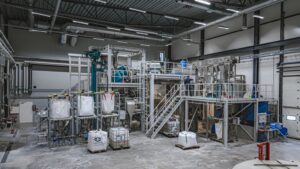The 2021 Corteva Agricultural Sciences Symposium highlighted cutting-edge innovations helping to improve farming systems.
Sponsored by Corteva Agriscience and hosted by the University of Guelph, the Corteva Agricultural Sciences Symposium was held in November and brought together experts to talk current trends in plant sciences, such as handling big data, machine learning, and using cutting-edge technology. Here’s some of the cool things these researchers are up to and why it matters.

Making Corn a Perennial Crop
Seth Murray
Corn breeder, Texas A&M University
Murray has discovered that individual genes don’t predict corn yield very well, so he began to look at the physical
qualities of corn instead. Using images taken by drones, he and his team members looked at the phenomic traits of corn to predict which plants would yield best and how breeding and selection could be improved. Murray is also working to create perennial corn varieties that could change corn production as we know it.

Investigating Delta-Yield
John Sulik
Assistant Professor, University of Gulph
Sulik uses using the remote sensing data to create information for making better farming management decisions. One recent project of his involves evaluating data aggregation approaches for “delta-yield” nitrogen fertility on-farm trial data. Delta-yield is an economic assessment of farmer nitrogen fertilizer rate decisions, notes Grain Farmers of Ontario. It estimates the economically optimal nitrogen rate so a farmer can compare their chosen nitrogen rate to the optimal. The study will help create an important foundation for future on-farm research aimed at improving environmental/economic performance of fertilizer nitrogen in corn.

Discovering the Potential of Drones
Kevin Falk
Integrated Field Sciences Research Scientist, Corteva Agriscience
Falk has made a name for himself as an up-and-coming star of the seed sector, having made Seed World’s Top 10 Next Gen Leaders list in 2020. He is currently exploring the use of technology likes drones to unlock the potential of crops like corn and soybean. He said improving the throughput and accuracy of plant phenotyping is core to the continued advances in breeding to ensure genetic gain and to meet global food demand. “Manual phenotyping requires enormous investments in time, cost and labor, as quantitative values are required for thousands of varieties across different environments, which presents a huge hurdle to scalability. Low-cost drones have great potential for collecting these phenotypic traits.”

Sniffing out Disease
Sindhuja Sankaran
Associate Professor, Washington State University
How can we use remote sending to study the interaction between crops, genetics and environment to produce sustainable food, fiber and fuels? This is what Sankaran specializes in. She utilizes opto-electronic, biological and chemical sensors for non-invasive, rapid and continuous monitoring of plant responses to environmental stress, helping create a faster and better understanding of how our food crops react to a changing environment. One of her recent projects? Using olfactory sensing systems to “sniff” out plant diseases before symptoms even appear













